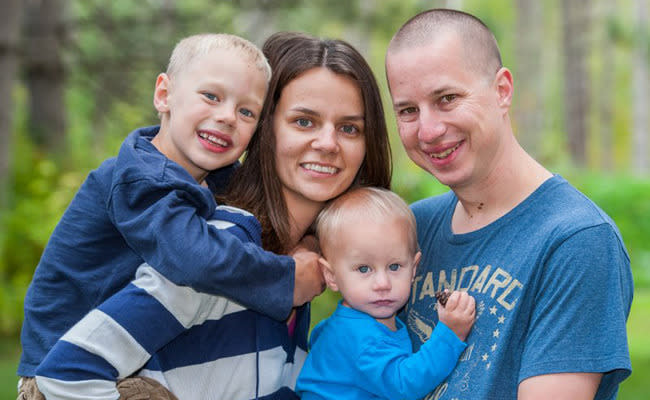Mom Donates 92 Gallons of Breast Milk After Stillbirth

Like many, many new moms, Amy Anderson spent much of her year postpartum pumping breast milk: eight months, to be exact. But Anderson wasn’t pumping for her own child. Baby Bryson died at 20 weeks gestation.
At 15 weeks, Anderson discovered Bryson, her third child, had a lower urinary tract obstruction. He died in utero the morning before Anderson’s appointment to schedule his surgery, right around 20 weeks — the unofficial mark the CDC uses to differentiate a miscarriage from a stillbirth.
More from The Bump: Miscarriage Symptoms: Signs And Causes
“His heart couldn’t handle the pressure that was building up in his bladder. I delivered his body at the age of 20 weeks,” Anderson tells Philly Voice.
In the midst of her grief, Anderson was also experiencing a different kind of pain: the discomfort associated with needing to express breast milk.
“No one prepared me for what would happen to my breasts after Bryson was born. In fact, I was told that it was way too early for breast milk to be produced by my body. But this was a horrible misconception,” she says. “Within a couple days after delivering Bryson, my milk came in. My rock-hard chest was throbbing, and milk saturated everything. No one suggested the option of donating Bryson’s milk.”
Anderson says her doctor suggested binding her breasts and taking Sudafed to stop her body from producing milk. But her intuition told her otherwise.
“I knew I wasn’t supposed to pump, as breastfeeding is based on a supply-and-demand relationship,” she says. “But I was in horrid pain, so I decided to pump just a little to relieve my body. Six ounces of colostrum milk were expressed during a couple minutes of that first pumping session. I felt such relief.”
She realized pumping was an emotional release for her as well.
More from The Bump: 7 Best Breast Pumps For Every Kind Of Mom
“As I expressed the milk, a real sense of calm descended,” she says. “I felt a powerful closeness to my Bryson, which reminded me how much I loved the breastfeeding relationship I had shared with my eldest son. Pumping milk in Bryson’s memory felt so very right. All life has meaning, and my son’s life was no different. I decided to embrace his life’s purpose.”
Anderson decided to donate her milk. As she researched milk banks, she learned Bryson’s purpose was even higher than she imagined; because he was born so early, her milk was deemed “preterm breast milk,” which is especially nutrient-rich.
“It was considerably healthier than full-term breast milk, as my body made it to sustain the life of a significantly premature baby,” Anderson says. “It is normal practice for the milk bank to combine the milk of three or more donors, but they kept Bryson’s milk separate and gave it to the highest of high-needs babies. It really was off the charts how phenomenal his milk was. I pumped for eight months to the day. Just imagine how many lives his nearly 92 gallons of milk saved!”
Now, Anderson uses her Facebook page to educate and advocate for moms who are in positions similar to hers.
“While there are definitely still tears, my heart fills with mother’s pride as I share his story,” she says. “Through my grief, I have found gratitude, and my sense of gratitude continues to multiply. I’ve learned to always look for the blessing in a situation, though it quite possibly is disguised. Honestly, I could, and will, talk about his legacy forever.” —Cassie Kreitner
(Photo: Sha-Lam Photography via Philly Voice)
More from The Bump:
New ‘Momojis’ Will Revolutionize Your New-Parent Texting
Holiday Gifts For Every Mom’s Wish List
Why Moms Are Using #7MonthsAwesome To Support A Pregnant Scientist

